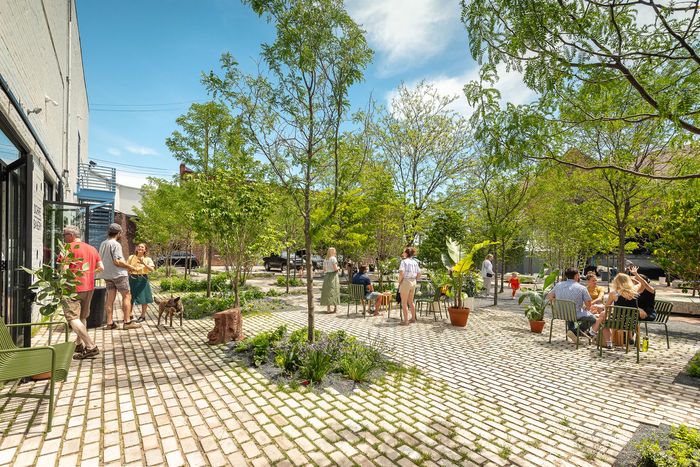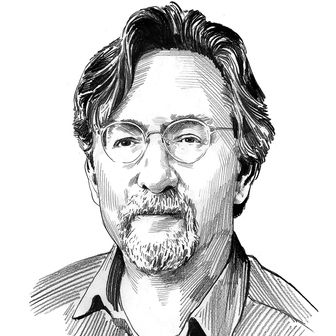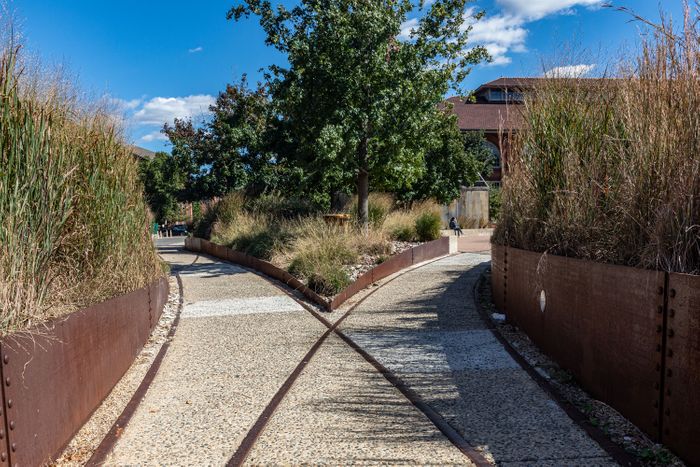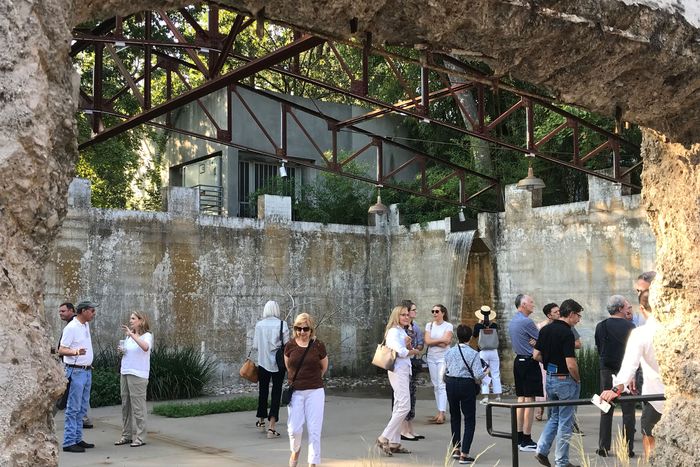
If there was a childhood moment when Julie Bargmann had intimations of her future as a landscape architect, it came not during some backwoods tromp or while touring a lavish garden but when she was sitting in the back seat of her family’s station wagon on the New Jersey Turnpike. The great chemical plants exhaling sulfurous plumes seemed to her like magic kingdoms, and she wondered about the lives of the people inside. Later, when she was in college at Carnegie Mellon in the 1980s, Pittsburgh’s ozone-laced air gave her the same jolt of industrial excitement. “You’d come out of class and smell the steelworks,” she recalls. “The river” — the Monongahela, which was sometimes tinted orange — “was a sublime place.”
Bargmann, who has just been awarded the first $100,000 Cornelia Hahn Oberlander prize in landscape architecture, never lost her taste for such wounded and poisonous places, even after they’ve stopped being productive. Old industrial areas bring out her desire to nurse them slowly back to health. As a professor at UVA and the founder of a firm she called D.I.R.T. (short for “Dump It Right There”) studio, she rejects the urge to demolish dead factories and scrub the land of memory, to conflate cleanup and obliteration: “For me, the modest or the genuine way to approach these ugly-duckling sites is to be empathetic. I see a place that’s impregnated with the labor of generations of workers. That goes deep. How do you honor that history without just resorting to plaques?”
The answer lies in projects like Detroit’s Core City Park, where Bargmann unpaved a parking lot and bared the foundations of a fire station that had been razed long ago. “I blurted out ‘Dig!,’ and up comes this beautiful red sandstone from the former enginehouse,” she says. “The miraculous moment was when they hoisted out of the ground the cornerstone with ‘1893’ written on it. The client wanted to stand it up and put it on a pedestal, and I said no — ‘Put it in the ground and put it back to work.’” Stones, bricks, and asphalt became the raw materials for a new pattern of pavers, interspersed with trees to form an urban woodland. The result is a public space layered with memory.
Bargmann preaches an ethic of modesty and restraint. Instead of moving great mountains of earth, making the land conform to a drawing, sift through what is already there. Don’t delete; preserve. Rather than glamorizing and framing industry’s leftovers, let a site speak the language of its own history. Do little or less, and sometimes nothing at all.
The conventional technique for cleaning up a contaminated site is to “hog and haul,” scooping polluted soil and carting it to other dumps — essentially, moving dirty dirt around. Bargmann prefers to leave as much of the stuff in place as possible to avoid spreading toxins “to someone else’s backyard” and help nature perform its slow-motion cleanup. She starts by visualizing the different levels of contamination and letting those variations suggest a strategy. “I love to take the data from the engineers and do a map of what’s hot and what’s not,” Bargmann says. Where conditions allow, she opts for phytoremediation: using plants to clean the soil. At AMD&ART Park in Vintondale, Pennsylvania, acidic mine runoff filters through a series of rock-lined ponds that raises the pH to safe levels, then washes through a sculpture park and flows into a restored wetland.
The mission to use landscape as a ledger inscribed with both heroic and unsavory history can smack up against her clients’ goals. Sometimes she finds herself working for the companies that ravaged the landscape in the first place and then want to erase that stigma as quickly and cleanly as possible. When Ford opened its River Rouge plant in Dearborn, Michigan, in 1928, it was a marvel of Machine Age efficiency that beguiled filmmakers, painters, and photographers. By the late 1990s, the plant had evolved, leaving some of the original parts as an archaeological zone of foul ruins, so the company hired Bargmann and architect William McDonough to remake the campus.
“They were going to wipe out everything, and I was just … Why?” Bargmann recalls. “This is the most critical part of an integrated manufacturing world — the first anywhere! Some structures were really nasty and best dealt with off-site, but we also planted remediation gardens in front of the old coke ovens, which were preserved. If you’re going to honor history and work on the toxic legacy, storytelling is a really powerful tool.”
Not all preservation of industrial relics meets her approval: She is not fond of treating artifacts like oversize museum objects or public sculptures, prettified by an overdesigned setting. She is diplomatic about the installation of remnants from an old sugar refinery at Domino Park in Williamsburg, confining herself to a general statement: “When the site’s history becomes objectified and commodified, it’s insulting. That’s where you start to enter the world of ruin porn.”
Bargmann’s approach coexists uneasily with Instagram culture, in which landscape is treated as a frame for a preening object. Her projects aren’t conceived to be photogenic on opening day since they set up processes that can grind on for years. Rather than plant meticulously coordinated gardens that require constant tending, she pops in trees and grasses that can be relied on to fend for themselves. Bargmann also has a soft spot for rough hardscape. “I’ve developed a weird palate of the stuff that people call debris,” she says. She has trained contractors to chop up concrete into big reusable slabs she calls “Barney rubble” and mix smaller chunks with crushed brick to produce “Betty rubble.” The combination can produce results that verge on the chic, as at Urban Outfitters’ headquarters at the Philadelphia Navy Yard.
Bargmann attracts believers, and among them is Philip Kafka, the businessman behind Core City Park. A restless entrepreneur who built a New York billboard franchise, Kafka traded that company in to become a developer in one of the nation’s least-promising markets: Detroit. There, he carved up and rehabbed abandoned industrial buildings, erected a little urban village of Quonset-hut apartments, and recycled empty lots. “We develop as little real estate as we can to subsidize as much public space and as many trees as possible,” he says. “Usually it’s the other way around. Manhattan developers treat landscape as an amenity, and it’s about as important as a gym or a mailroom. But our approach communicates a belief in the future.”
Kafka doesn’t just hire Bargmann; he inhales her ideas. “The philosophy driving all my work is something Julie says: ‘Great design emerges — it never descends,’” he says. He means that both figuratively and literally: Bargmann doesn’t just execute a design at her laptop or hand off a sketch to her juniors. Instead, she slaps on a hard hat, tromps over to the site, and keeps an eye on what the steam shovels and jackhammers bring up. It’s an artisanal approach to industrial terrain, an inch-by-inch treatment of diseased sites that are sometimes measured in square miles. The need for Bargmann’s skills and tenderness is almost infinite since the world is filled with ugly ducklings: dead malls, factories gone quiet, sludge-coated hillsides, rivers that run in alarming hues, oil-stained waterfronts, noxious bogs. To most of us, they are dead zones, best fenced off and avoided or else purified and rebuilt. To Bargmann, they have all the allure of crime scenes, magically grim and mysteriously eloquent, unspooling their stories one clue at a time.







